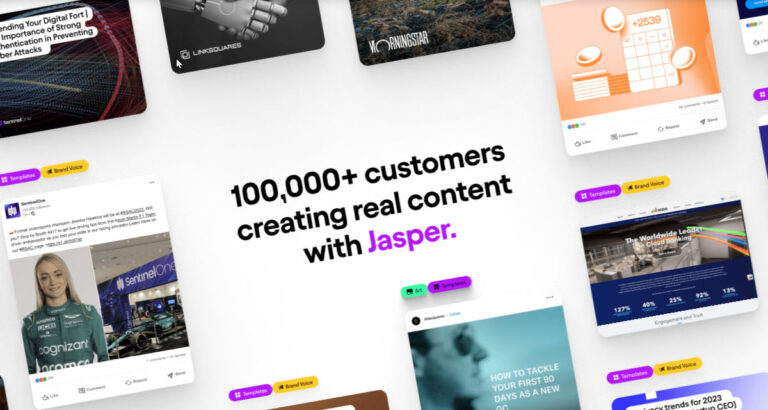Google AI SGE: Impact On SEO & How To Adapt

This post looks at Google AI SGE (Search Generative Experience), its impact on SEO, and how website admins can adjust their approach to rank on search.
Google and other tech companies have been using artificial intelligence (AI) tools behind the scenes for years.
But now that things like ChatGPT and Bard are at the forefront of the marketplace, they’ve taken the step to evolve how users engage with their search engines.
Traditionally, you would simply type a search query into their engine and get results based on keyword and technical optimization that helped rank sites high.
Improved Search Results With Google SGE AI
But with AI assisting the search results, users can get a more in-depth answer to their needs.
AI has impressive predictive behavior analysis that contributes to the answers given.

As online marketers, you must know how to navigate this new terrain because it will soon replace some of your traditional strategies.
You don’t have to worry that websites will be replaced with search engine answers because your ability to show up is how Google makes money through ads.
Google’s AI Search Generative Experience is still in its infancy for consumers and competitors.
This stage gives you enough time to learn the ropes and integrate a strategy with your site before the masses implement one.
Google SGE – Understand the Goal of Google’s AI Search for Users
One thing Google has always strived to do is help users find the information they want.
Consumers often need to learn how to put their queries into words.
Or, they need to figure out what else to look for to get the information they need to make decisions.
With AI, prompts can be delivered to the person on the search engine to help direct them correctly.
Google SGE Helps Users Follow Logical Steps
Instead of them having to enter a completely new search query, they can simply utilize the AI features built into Google’s Search Generative Experience (SGE) to come up with the logical next step for them.
Then, with a click of a button, they can move on to that next search rather than wasting time typing or brainstorming questions.
It will be quicker for the end user and allow them to find information they didn’t know they needed or wanted to know.
When someone uses SGE and types in a query, they’ll see a summarized result that answers their question.
Below will be links allowing them to gather more information.
It is similar to the Google ” People Also Ask ” feature, but it’s directly below the summary and continually guides them to explore the topic more deeply.
These are known as clusters of content, where there are follow-up questions.
If you can craft content that digs into a topic like this, branching out from a straightforward query, your site has a better chance of being shown on search engine results pages.
Google AI SGE – Your Content Can Still Show Up in Google SERPs Perspectives
One of the reasons Google will be using AI to deliver search results is that people can simply stay on Google and read the information, allowing them to present ads to those individuals.
The way people will be using AI on search engines is similar to voice search.

So you want to make sure your site is optimized to answer search queries in a way that people would speak it.
It is how AI also presents its following prompts with questions.
Google is one of many search engines using AI now.
Bing is also bringing AI to the forefront so consumers can interact with it directly rather than having it all be behind the scenes working on algorithms.
The Bad News – Position Zero
The bad news is instead of being able to potentially achieve a position zero spot in the Google search results pages, AI results will now occupy those positions.
However, you have to look at the layout of the AI results and understand that you still have a chance to rank competitively if your content helps AI deliver its answer.
On the left side of the page, the AI summary will show to answer the question, with a button to ask a follow-up question directly below.
But to the right of the AI summary will be a snapshot of several sources that AI may have used to help answer the question.
You cannot strategically aim for a featured snippet position known as position zero.
Instead, you want to become one of those coveted sources AI uses to generate its answer.
It means website owners must focus on creating comprehensive content that covers a topic thoroughly, as a pillar blog post will do.
You will also want to interlink your content strategically.
Search engines will now place follow-up content below the AI results to entice people to dig deeper.
When you think about keyword research, the semantic keywords you’ll pursue will help the user drill down and discover more information.
Create Question Clusters
You’ll want to create clusters of questions an end user may have about a topic.
That way, your content answers all related questions and covers any essential next steps for the user.
Now, more than ever, the focus will be on long-tail keyword phrases.
It is how people often speak their search queries using voice search.
It’s also what AI will use to help people gather more knowledge.
Instead of focusing more on wording, think about the intent the user has, which is something AI excels at.
Behavior and user intent will be more beneficial when crafting content than just sticking a phrase into your content multiple times.
Google aims to showcase multiple perspectives, which they say is a “range of voices and sources.”
You want to be one of the sources and voices they present to users.
Consequently, you have an increased chance of getting a click-through.
With these perspectives, Google will pull sources from your websites and social media content.
Remember that your information must be public and available to share with others.
Use Social & Multi-Media
You want to ensure you utilize social media platforms where your target audience will likely get information.
You also want to make sure you are using a wide variety of media formats.
The more variety you have in using text, videos, images, and audio, the more likely your content will show up for the people using Google Search Generative Experience.
You want to ensure you’re using the concept of entities when planning your content marketing strategy.
New Categorization – Entities
Entities are how search engines categorize things.
So they might be groups of people, ideas, places, or products – optimizing for intent is how you do this correctly.
Google Perspectives
The Google Perspectives feature will be an option that people can turn on or off as a filter.
It will present multi-media content to them, such as long YouTube videos, short TikToks, social quote posters, or infographics.
These options include text-based posts people have shared across the web.
It might be your website with a Q&A page, a forum or discussion board, a social media platform, or something else.
Have Your Profile Showcased
It will include how popular your content is, so you want to work on optimizing social media for this purpose.
Participating in forums and contributing to threads with a lot of engagement will also benefit you.
You want to ensure you have a profile optimized for traffic and use a signature file with a link to your site.
Google has stated that they aim to help people find hidden gems, and one example they used is a comment in a forum thread, which is harder to find.
So participating online as a niche expert will bode well for you.
Google AI SGE – Prepare for the Follow-Up Questions Feature
You can use your knowledge about what the user will likely follow up with.
Combine that with keyword and artificial intelligence tools to help you expand your reach with content likely to appear in follow-up results.
Most online entrepreneurs hope they are one of the listed sources in the original overview AI delivers.
Include Follow-Up Information In Your Content
However, you’ll stand a greater chance of getting more traffic if you include follow-up information as the user drills down to get more specific about their needs.
AI can present them with follow-up questions they may want to pursue, but it also allows them to ask a follow-up question directly beneath the AI summary overview.

For example, if someone is searching for information about buying a bike, follow-up questions might include the following:
- What size bike do I need for my height?
- How much do you need to spend to get a good bike?
- What type of bike should I get?
- What is a hybrid bike suitable for?
Make sure you’re using optimized titles, headers, and meta descriptions.
You can use AI to help you write product descriptions that are more engaging to humans.
For example, if you look up a thermos on Amazon, you might see a specific description bullet point like this:
- STARTS COLD, STAYS COLD: THERMOS vacuum insulation technology for maximum temperature retention. It keeps your beverages cold for hours. Not for hot liquids
But ask AI to “Write a more engaging description bullet point list” for the product, and you end up with this:
- Ice-Cold for Hours: Enjoy refreshing, chilled beverages throughout the day with THERMOS vacuum insulation technology. Keeps drinks frosty cold, maintaining their coolness for hours on end.
That paints a better picture for human readers because using verbiage like refreshing makes the person envision the frosty beverage rather than just a blunt fact about insulation technology.
So prepare your content in a way that answers all questions and speaks to the user in a way they will naturally get information from a trusted friend, not by spitting out a list of product specifications.
Google AI SGE – Getting Product Reviews Listed in the Buyer’s Guide Section
From a marketing perspective, we often aim to rank our review sites high in search engines.
Then people can take our recommendations and click through our affiliate links or links to our offers.

Google understands that people want the opinions of fellow consumers, so they’re not hoping to exclude review content.
But they are looking for originality of information, preferably presented by someone with enhanced insight about the product.
They’ve previously stated that reviews with authority, expertise, and trustworthiness will outperform generic content.
Google also says they will provide reviews in various formats, so you’ll want text, videos, and other media to make your recommendations.
Aim For Transactional Listings
They will present sidebars of buyer guides or as a dropdown feature, depending on whether you’re on a mobile device.
You want to show your content to people looking to purchase products.
Different from what you often see with Amazon links, the result is a complex product listing.
Instead, it’s editorial content (product reviews) written by online entrepreneurs who have good information to share.
Google uses the Shopping Graph to help people find what they want.
So you want your recommendations and reviews to include specific information people seek.
That might include sizes, colors, warranties, materials, pros and cons, comparisons to other products, and more.
Google’s AI machine will source information from sites covering these intricate details.
So you want to know what is essential to consumers.
For example, if promoting a product on Amazon, look at the customer’s questions and answers.
People might ask questions about a treadmill that includes:
- How long is the warranty?
- Is this a good treadmill for tall people?
- What is the weight limit for the treadmill?
And if you go to the reviews and ratings, you’ll see a word cloud showing you what most people mentioned in their reviews, which can include things like:
- Easy to set up (or easy to assemble)
- Easy to use
- Fits perfectly
- Lightweight (easy to move around)
So when you are writing your product reviews from now on, you need to include all of the basic specifications of products.
Still, you also want to consider what users find essential because AI will present results based on what they want.
Don’t Just Summarize Sales Pages
Google has stated that they will not be presenting sites that simply summarize products and product information based on what the listing page has.
They want you to give in-depth research and your opinion about each product instead.
Google AI SGE – How Does Using AI Impact Your SEO Now?
It would be foolish for search engines and other platforms to believe people will be using something other than artificial intelligence tools to create their content now.
This technology allows people with little to no skill in writing or creating other media formats to level the playing field.
However, while search engines have stated that they won’t penalize AI-generated content, they reserve the right to prioritize top-quality content written to benefit their users.
If you are simply going to ChatGPT and saying something like,
“Write an article about how to succeed with email marketing.”
You will never rank as high as those who write from scratch with a tailored approach to their audience or use AI more strategically.
This detail is what most people need to understand about using AI effectively.
Have Close Oversight Of The Process
You must have close oversight over the process to benefit your business.
It requires you to know how to prompt AI to create something useful for your readers that will set you apart from the competition.
You must also know how to get it to dig deeper than the superficial results it will initially give you.
Make Sure Your AI Results Are Correct
Whether that means redirecting it to find the correct answers or replacing poor-quality information with better content, you fill in yourself.
AI is known for making up facts that sound very realistic.
If it doesn’t have an answer for you, it often won’t tell you that but instead will simply create something that sounds good to the reader.
It also has a knack for tapping into a database of vast amounts of information and delivering generic content that needs to be more to help you rank well in the search engine results pages.
Personalize AI Content Helps Google SGE
If you are using AI and trying to rank your site well, you must create a mix of AI-generated content with human oversight and contribution.
The more AI gains a foothold in standard content creation, it is imperative.
Right now, there are still many marketers and consumers who simply need to start using this technology.
But as using AI becomes familiar, you’ll see websites packed with the same stale information.
Because the web admins have all used the same AI tools, they will fail to stand out in any way that will get them recognized by search engines.
The same rules apply when using AI to create content for your website if you were to write them from scratch as a human content creator.
You still have to maintain an expert voice, deliver well-researched and thorough information, and ensure it’s enjoyable for your readers.
Start Content Creation On Your Own
Start your content creation process from scratch on your own.
Then ask for AI’s help in expanding or improving the content for your visitors rather than allowing it to have the primary role from the beginning.
Search bots will crawl all these websites using AI and recognize the same patterns, so you cannot rank for the exact searches.
Add Your Unique Perspective
In their helpful content update, Google stated that your content needs a unique perspective, which only humans can do.
Another thing you want to consider when using AI for search rankings is that it’s more than just capable of helping with content.
Use AI To Help With SEO & Google SGE AI
You can use artificial intelligence to help you with other SEO factors your competitors may still need to learn.
That includes having it write your metadata and improve your technical functions, such as page load speed, mobile functionality, and more.
Those who learn how to master paid ads might also find they have a better chance of getting more traffic from search engines, but this isn’t anything new.
As long as you have proved your site is a helpful resource, your content may show up multiple times as a user continues diving deep into the topic.
It’s important to remember that the consumer end of using AI for Search on Google is relatively new.
Keep Up To Date With Search Engine Changes
Therefore, things are likely to evolve at a rapid pace as they gain feedback from consumers.
Pay attention to these announced changes and adjust your search engine optimization strategy accordingly.
Then you don’t get left behind. Maintain quality content control and focus on serving the needs of your readers, and you’ll be off to a good start.
Whether or not Google’s Search Generative Experience will help or hurt web admins remains to be seen.
But we know having good content, a mix of media formats, and a presence on social media will factor into your organic traffic strategy.






